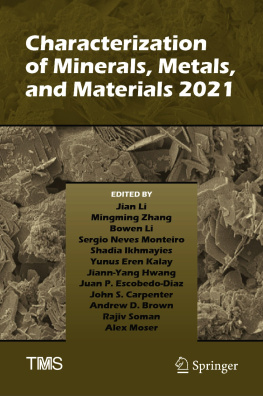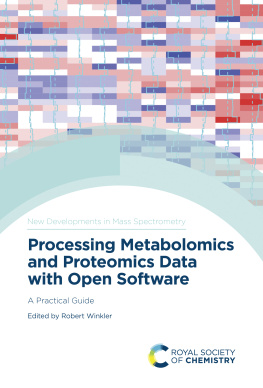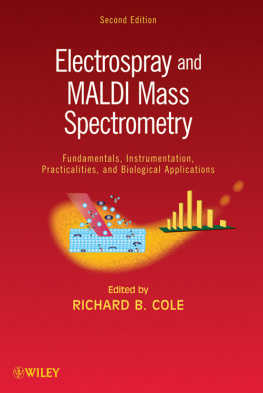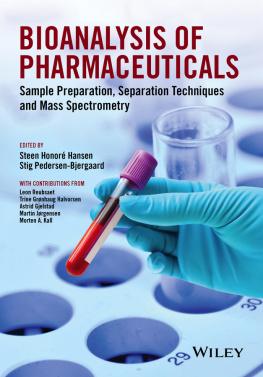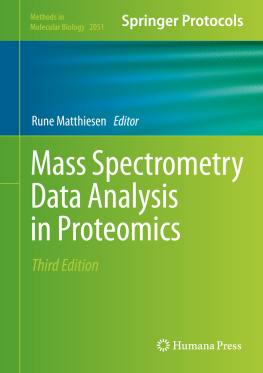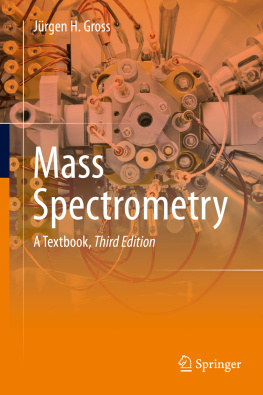Madson - Mass spectrometry: techniques for structural characterization of glycans
Here you can read online Madson - Mass spectrometry: techniques for structural characterization of glycans full text of the book (entire story) in english for free. Download pdf and epub, get meaning, cover and reviews about this ebook. City: Amsterdam, year: 2016, publisher: Elsevier, genre: Home and family. Description of the work, (preface) as well as reviews are available. Best literature library LitArk.com created for fans of good reading and offers a wide selection of genres:
Romance novel
Science fiction
Adventure
Detective
Science
History
Home and family
Prose
Art
Politics
Computer
Non-fiction
Religion
Business
Children
Humor
Choose a favorite category and find really read worthwhile books. Enjoy immersion in the world of imagination, feel the emotions of the characters or learn something new for yourself, make an fascinating discovery.

- Book:Mass spectrometry: techniques for structural characterization of glycans
- Author:
- Publisher:Elsevier
- Genre:
- Year:2016
- City:Amsterdam
- Rating:3 / 5
- Favourites:Add to favourites
- Your mark:
- 60
- 1
- 2
- 3
- 4
- 5
Mass spectrometry: techniques for structural characterization of glycans: summary, description and annotation
We offer to read an annotation, description, summary or preface (depends on what the author of the book "Mass spectrometry: techniques for structural characterization of glycans" wrote himself). If you haven't found the necessary information about the book — write in the comments, we will try to find it.
Madson: author's other books
Who wrote Mass spectrometry: techniques for structural characterization of glycans? Find out the surname, the name of the author of the book and a list of all author's works by series.
Mass spectrometry: techniques for structural characterization of glycans — read online for free the complete book (whole text) full work
Below is the text of the book, divided by pages. System saving the place of the last page read, allows you to conveniently read the book "Mass spectrometry: techniques for structural characterization of glycans" online for free, without having to search again every time where you left off. Put a bookmark, and you can go to the page where you finished reading at any time.
Font size:
Interval:
Bookmark:
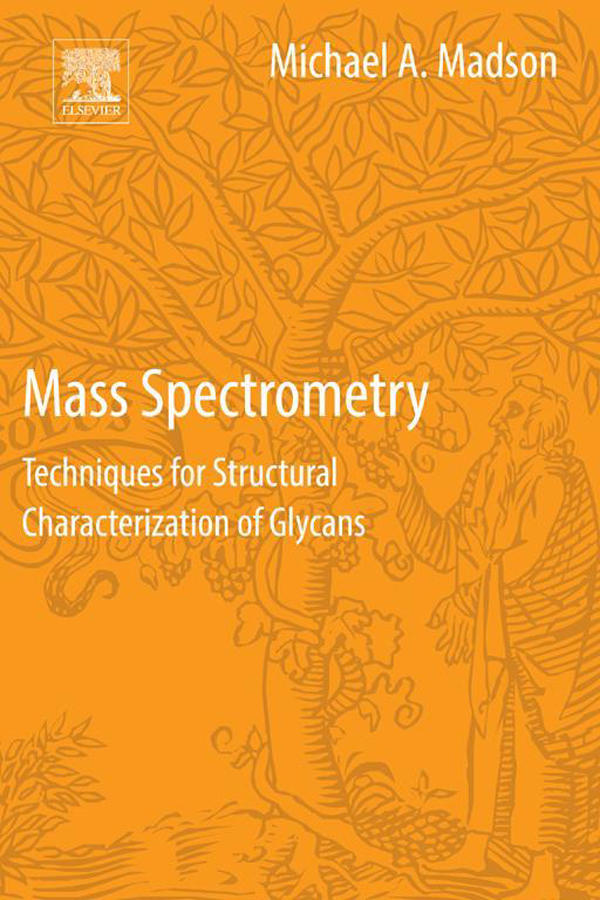
- Figures in Mass Spectral Analysis of Carbohydrates
Michael A. Madson
BioLogistics LLC, Ames, IA, USA

Elsevier
Radarweg 29, PO Box 211, 1000 AE Amsterdam, Netherlands
The Boulevard, Langford Lane, Kidlington, Oxford OX5 1GB, UK
50 Hampshire Street, 5th Floor, Cambridge, MA 02139, USA
Copyright 2016 Elsevier Inc. All rights reserved.
No part of this publication may be reproduced or transmitted in any form or by any means, electronic or mechanical, including photocopying, recording, or any information storage and retrieval system, without permission in writing from the publisher. Details on how to seek permission, further information about the Publishers permissions policies and our arrangements with organizations such as the Copyright Clearance Center and the Copyright Licensing Agency, can be found at our website: www.elsevier.com/permissions
This book and the individual contributions contained in it are protected under copyright by the Publisher (other than as may be noted herein).
Notices
Knowledge and best practice in this field are constantly changing. As new research and experience broaden our understanding, changes in research methods or professional practices, may become necessary.
Practitioners and researchers must always rely on their own experience and knowledge in evaluating and using any information or methods described herein. In using such information or methods they should be mindful of their own safety and the safety of others, including parties for whom they have a professional responsibility.
To the fullest extent of the law, neither the Publisher nor the authors, contributors, or editors, assume any liability for any injury and/or damage to persons or property as a matter of products liability, negligence or otherwise, or from any use or operation of any methods, products, instructions, or ideas contained in the material herein.
British Library Cataloguing-in-Publication Data
A catalogue record for this book is available from the British Library
Library of Congress Cataloging-in-Publication Data
A catalog record for this book is available from the Library of Congress
ISBN: 978-0-12-804129-1
For Information on all Elsevier publications visit our website at https://www.elsevier.com/

We dedicate this book to my Lord and Savior Jesus the Christ, His Father & mine and the Holy Spirit who have spent countless hours with me in writing this book so that many others may grasp the power of these techniques and apply them to their quests in science. We hope chemistry and medicine will be advanced and lives will be saved or lengthened because of Their intervention into my life.
We describe the use of mass spectral analysis for the qualitative analysis of glycans. We examine the spectra from Electrospray Ionization Mass Spectrometry (ESI MS), Matrix Assisted Laser Desorption Mass Spectrometry (MALDI MS) and Atmospheric Pressure Ionization Mass Spectrometry (API MS) of carbohydrates. The former are time-of-flight (TOF) instruments and the last a triple quadrapole instrument. We have one spectrum that is a single quadrapole instrument. We describe several methods that aid in the determination of oligosaccharide structure by MS. They are: N- and O-linked oligosaccharide enzymic/borohydride N-linkage cleavage and O-linked reductive -elimination, from glycoproteins, nonreductive -elimination of O-linked oligosaccharides from glycoproteins, two isolation methods for nonglycoprotein oligosaccharides, sulfate/phosphate substitution discernment of oligosaccharides and the isolation method for amino acid substituted O-linked oligosaccharides from glycoproteins. We provide a partial bibliography for the possible future participation of sialyl lactose-6 phosphate in disease treatment.
Glycan isolation; phosphate-sulfate discernment; elemental analysis-MS ions
In this book, we describe the methods required for isolation of intact oligosaccharides for analysis by mass spectrometry. There are two basic methods we use. One is done by passing ammonium salts through a cation exchange cartridge in the ammonium form []. The method is described below.
The monosaccharide composition of the glycan to be analyzed is accomplished by known methods. Generally, the glycan to be analyzed is hydrolyzed with strong acid by HCl solution at various concentrations of acid, various times and various temperatures due to the varied acid labilities and stabilities of the oligosaccharides and monosaccharides to be analyzed. Two different hydrolytic conditions [].
Often glycans can be in the reducing sugar or glycitol form. An example of glycan reducing sugar analysis and the corresponding glycan alditol analysis can be done and is shown below []. This work establishes which monosaccharide is the reducing sugar of the glycan. That is, the reducing glycan is hydrolyzed, possibly using more than one hydrolytic conditions, to give the complete monosaccharide composition. Then the reducing glycan is reduced with NaBH4 with standard conditions (given below) and the reducing monosaccharide will disappear from the monosaccharide composition, the alditol will have a different retention time. Most of the time monosaccharide alditols have a much lower retention time than the corresponding reducing monosaccharides. An example is given for bovine thyroglobulin O-linked oligosaccharide.
To help identify the reducing sugar of a glycan, as noted above, to provide a reactive site for further derivatization to allow further characterization by MS or chromatography, a method for the nonreductive -elimination of O-linked oligosaccharides from glycoprotein has been developed. The method involves first removing any N-linked oligosaccharides by the method described (N- and O-linked oligosaccharide isolation method) []. The O-linked oligosaccharide, removed from the ammonium form cation exchange cartridge is treated, as shown below, to release the glycan which was formerly linked to protein by an O-glycosidic linkage.
As an example of negative ion ESI-MS of glycans, we chose banana fruit extract ESI-MS [).
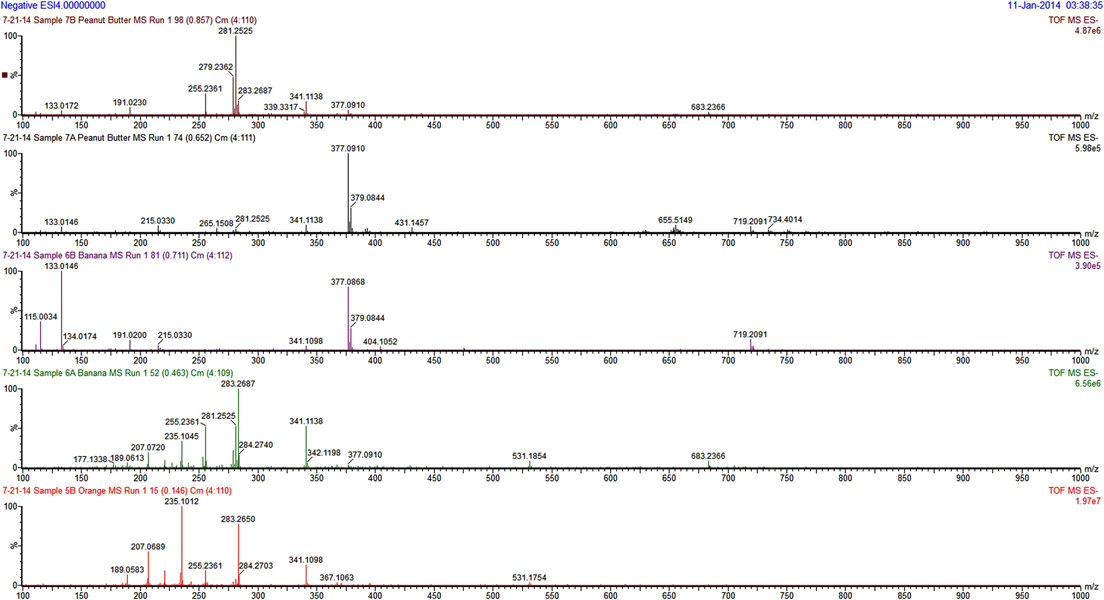
Font size:
Interval:
Bookmark:
Similar books «Mass spectrometry: techniques for structural characterization of glycans»
Look at similar books to Mass spectrometry: techniques for structural characterization of glycans. We have selected literature similar in name and meaning in the hope of providing readers with more options to find new, interesting, not yet read works.
Discussion, reviews of the book Mass spectrometry: techniques for structural characterization of glycans and just readers' own opinions. Leave your comments, write what you think about the work, its meaning or the main characters. Specify what exactly you liked and what you didn't like, and why you think so.


